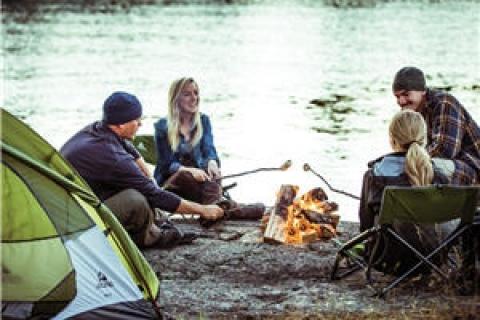
Tough to find a more pleasing experience than sitting around a cozy campfire during autumn. However, campfires can also escape the fire pit and become a roaring, damaging wildfire in only a few minutes if not watched. I witnessed a campfire quickly ignite a two-acre grass fire before being extinguished by campground employees. If that fire had occurred in a more remote area, it would have been bigger and more damaging. The combination of autumn’s dryness and an abundance of fire starting tinder covering the ground in the form of fallen leaves and dead ground cover can wreak havoc.
 |
| Campfire safety is easily achieved by using common sense, staying alert and keeping the fire at a smaller, manageable size. |
When starting a campfire or adding wood to one, be mindful of the floating embers that shoot up into the air. These small glowing fire starters seem harmless as they flutter away. However, if the conditions are right, and autumn weather conditions are normally so, a flare up may occur. A common practice among campers is to use newspaper to ignite a campfire. Doing so normally leads to those floating embers that land seemingly harmless, but soon are the culprit to a raging and spreading outdoor fire. Instead, start fires with prepared starters such as wax and sawdust candles or if using paper to ignite the kindling, use as little as needed to do the job.
Keep fires contained in the fire ring and to a manageable size. Also be sure to clear any fallen leaves near the fire ring, sort of a fire break from the forest surrounding your campsite. Avoid overloading the fire ring, which can become a tall, dancing fire that causes burning embers to explode and be launched well away from the fire break.
For more information about how to enjoy fall camping, visit Fall Winter Camping: Sleeping in Comfort at Bass Pro 1Source.
- 5191 views

